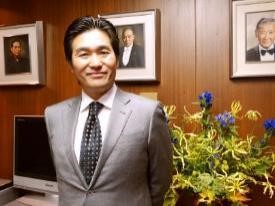
There are various kind of Wagashi.

You can enjoy luxurious ones with green tea or you can enjoy more casual ones on daily basis, such as Dorayaki or Daihuku,
Each of them is composed with different ingredients, made in different ways under different circumstances. Have you ever wondered what the definition of Wagashi is?
I had an opportunity to get to know the history of Wagashi. Learning that the origin of Wagashi made me realize that Wagashi is developing even now and opened my eye to what I didn’t know about Wagashi.
In this article, I would like to look through the history of Wagashi and find the factor that make those various kind of sweets Wagashi. The following is what Mr,Masaki Hosoda told me about the history of Eitaro Sohonpo’s Wagashi.

The ancient time
For many years, nuts or fruits such as persimmons have been eaten as sweets in Japan, where there are four seasons through the year.

However, those fruits or nuts are in full bloom in specific season, for instance you can eat persimmons only in autumn.
This is why people had invented the ways to allow themselves to enjoy those sweets through the year by dehydrating those fruits or pulverize them and letting them soak water after that.
The word related to Wagashi first appeared on the paper in Bungo country regional chronicle, the book written in 713. This was the first time Mochi has been described on books and it tells you that there was a method of transforming Mochi-rice into Mochi at that time.
Wagashi brought by Kentoshi(envoy from Chin)
In 800th, there were some sweets in what Kentoshi(envoys from China) brought in Japan.

Those were called danki and that included persimmons, chestnuts and apricot with black sugar which were covered with flour and fried. It is said that this was the first time for Japanese people to see the sugar. However, most of those sweets were offered to God and average people never had the chance to enjoy those sweets on their own.
In Kamakura period
In 1200th, people started eating Yokan along with green tea. Yokan’s Chinese character 羊羹(red bean jelly)

means sheep and soup of meat. To begin with, people in China used to call the soup with sheep’s meat in Yokan when they became solid because of gelatin.
When Chinese envoys brought this soup in Japan, since Zen priest deplored eating meat, they replaced sheep meat with Azuki(red beans) and consolidate them with agar.
In Aduchi-Momoyama period

In the latter half of 1500, when Christian culture appeared in Japan people from Portugal brought sweets of their own countries in Japan, such as Kasutera(Japanese sponge cake), Konpeito(Japanese candy), Boro or Biscuit.
Those sweets from Portugal spread across the country and developed. Those sweets has become the part of Wagashi in spite of the fact that they were not born in Japan and now people enjoy them with green tea.
In Edo period
In 1700th, the Government support expedited the increase of amount of sugar made in Japan and it began to replace the imported ones.

It is said that almost all of current Wagashi were consolidated from 1700 to 1800.
For example, Sakura-mochi, Imagawa-yaki, Kintsuba, Daihuku are also ones of them. The sweets from other continents transformed into the one that even average people can afford in accordance with the social change.
Mr, Masaki Hosoda Thank you for telling me this story.
If you go back to the history of Wagashi, you can tell that the majority of Wagashi were brought in Japan from other countries hand in hand with religions.
The Japanese tendency to accept the foreign things and develop them in the unique way is very prominent even in the Wagashi world. I think it is safe to assume that “ the ones that developed in Japan in its own way” is the definition of Wagashi, given the fact that they are from different countries and contains various kind of ingredients. Everything started from the connection with other countries.
This interview made me realize that Wagashi will keep developing in the process of interacting with foreign countries and making them even better.
Interviewed Mr. Masaki Hosoda, Vice President of Eitaro Confectionary Co., Ltd.

on 16th Oct,2016.
written by Mika Wada.
About Eitaro Sohonpo
Traditional Wagashi store. Ever since they used to sell Edo-sweets, they have been adhering to their principles that they choose simple ingredients and only add what are important. They have been making valiant effort to introduce innovational idea and continued evolving.









